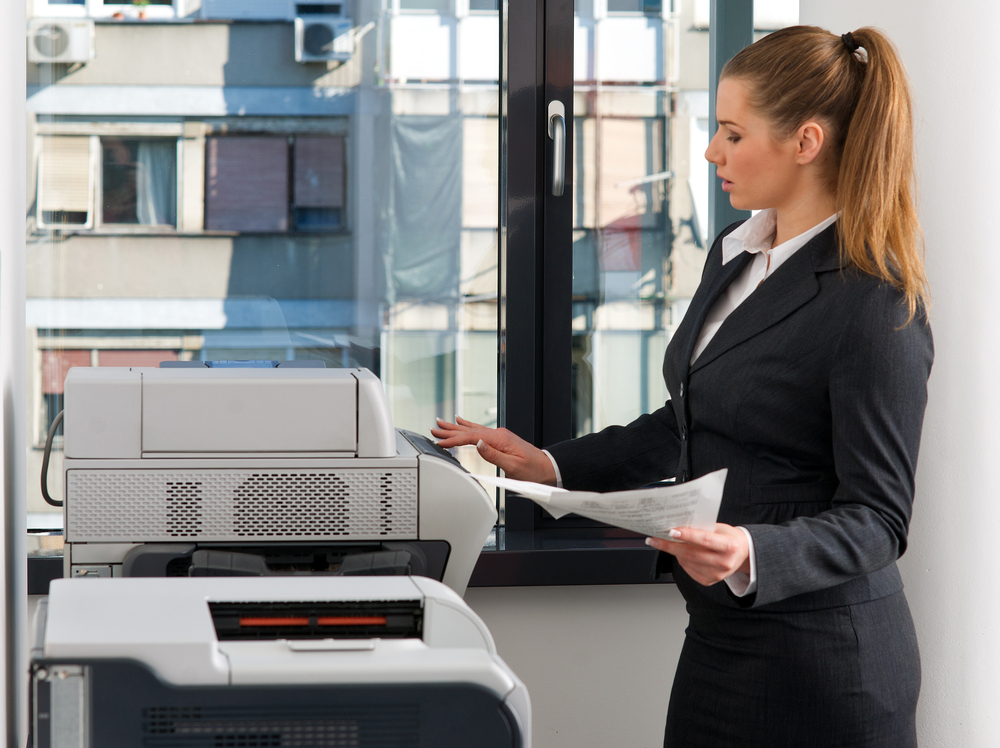Introduction:
Printing is a fundamental part of any professional business, but achieving professional-level results from your printer can often be a struggle. Too often, you can be let down by printing quality that fails to meet expectations.
Whether you’re a novice or an experienced print professional, this guide will help you understand the basics of today’s printing technologies to ensure you’re always getting the most out of your printer. We’ll explore how to look for and recognize issues before they become costly mistakes and provide tips on how to maximize the results of your prints.
From essential information about the fundamentals of printing, such as paper types and resolution, to more advanced topics, such as color management and pre-flight prep checks, we’ve got everything covered in this guide on professional quality printing results. Let’s dive in!
Pre-Print Preparation: Paper and Artwork:
Getting the best results from your printing starts well before the ink hits the paper. Making sure you have the right paper and artwork is key for professional quality printing.
When selecting paper, the two main factors to consider are weight and finish. A heavier weight of paper will result in a better quality feel of your prints, while a semi-gloss or gloss finish can bring out more vibrancy in your graphics. It’s all about finding a combination that suits your project best.
And when it comes to artwork, resolution plays an important role in attaining optimal results. Make sure all images used are at least 300 ppi (pixels per inch), or your prints will appear pixelated and blurry. This is especially true for large format prints! So take some extra time to ensure that your artwork files have been correctly prepared before sending them off to print.
Selecting and Setting Up Printing Equipment:
When it comes to printing, having the right equipment for the job is key for getting quality results. Before you begin printing, you’ll need to choose and set up your printer and other components.
The first thing you need to decide is what type of printer is best suited to your task. Inkjet printers are great for just about anything, but if you’re looking for a cost-effective option that still produces good results, then a laser printer might be more suitable.
Once you have your printer selected, it’s time to set it up. Some printers come with easy-to-follow instructions while others may require some trial and error to figure out the best settings. It’s important to take the time to make sure everything is adjusted correctly before beginning your print job—otherwise you could end up with less than satisfactory results.
It’s also worth investing in good quality paper, ink and toner that have been designed for your specific needs. You’ll be surprised at how much of an improvement quality supplies can make in the overall look and feel of your finished product!
Understanding the Fundamentals of Ink Choices:
When it comes to obtaining professional-quality printing results, understanding the foundational principles of ink selection is essential. The right ink will help you achieve perfect color, crisp edges, and smooth coverage when printed.
Pigment Ink vs. Dye-based Ink:
The two primary types of ink used in printing are pigment-based ink and dye-based ink. In general, pigment-based inks are best for lightfastness and print longevity but may require more than one layer of ink. Dye-based inks typically provide a more vibrant range of colors but tend to fade quickly over time.
Color Gamut:
It’s important to understand the color gamut that your printer is capable of producing so that you can choose the appropriate ink type. Each printer model supports a different color gamut and has its own set of supported color profiles to help you achieve accurate colors for your desired result.
Testing Your Inks:
Before committing to a specific ink choice, it’s best practice to test the density of your chosen inks on a dummy sheet to determine whether the colors match your original design file and visually examine the results for any flaws or inconsistencies. If something isn’t quite right, you should adjust either the design elements or paper type as necessary before continuing with a full production run.
Printing Resolution to Consider for Superior Results:
When it comes to achieving superior printing results, one of the most critical factors is resolution. To get the best quality results for your prints, you need to be aware of several printing resolution considerations.
DPI and PPI:
The terms dots per inch (DPI) and pixels per inch (PPI) are often used interchangeably, but they refer to different properties of a digital image. PPI refers to the number of pixels in an image while DPI refers to the number of dots in a printed image. When printing or resizing images, make sure you pay attention to both—too much or too little PPI or DPI can produce poor print quality.
Image Resolution:
Your printer’s maximum resolution is determined by its capabilities, as well as the type and weight of paper you’re using. It’s important to choose the right resolution for your project in order to get high-quality prints. If you want very fine lines and details, go with a higher resolution, like 1200dpi or 2400dpi. For larger formats, 300-600dpi should be fine.
Paper Quality:
The quality of your paper is also an important factor for good prints. Good quality paper will yield better results than low-grade paper—plus it won’t cause jams or damage your printer. When shopping for printers and paper stock, consider these features:
- Weight – Heavier papers are usually better suited for higher resolutions since they can hold more ink without smudging or fading;
- GSM – A measure of the weight of paper; higher GSM means thicker paper;
- Finish – Gloss
Troubleshooting Tips for Common Printing Issues:
When it comes to printing, no one wants to have to deal with common issues like blurry or distorted images or prints that don’t turn out quite as expected. Thankfully, there are some simple troubleshooting printing tips you can follow to help ensure that your prints come out at professional quality.
Checking Ink and Toner Levels:
The first step in troubleshooting any printing issue is checking your ink and toner levels. Make sure your printer is stocked up with the right ink and toner cartridges for the job, as low levels will result in poor print quality and even errors during the printing process. If necessary, replace your cartridges before continuing.
Adjusting DPI Settings:
Another tip for troubleshooting common printing issues is adjusting your DPI settings. The dots per inch (DPI) setting affects the sharpness of each printed image, so try increasing it for a more detailed result. Typically, higher DPI settings mean longer drying times and heavier ink consumption, but if you’re looking for professional-quality results then it’s worth it.
Checking Printer Alignment:
If you’re still experiencing printing issues despite following the above tips, then it could be an issue with printer alignment. To check this, open the control panel on your printer and select ‘Align Printer’ from the menu options. This will automatically adjust any misalignments between cartridges so that they are even and able to produce prints of a consistent quality every time.
Post-Printing Maintenance and Care:
Now that you’re set up and your printer results are as professional as possible, it’s time to think about post-printing maintenance and care. Taking some extra steps to protect your prints and extend the life of your prints is essential.
Adjusting Printer Settings:
To ensure that you get the best quality prints, make sure you adjust your printer settings accordingly. For example, if you’re printing on textured paper, increase the amount of ink that is used so that it can penetrate the paper better. This will help ensure that the ink won’t fade quickly over time.
Keeping Your Ink Fresh:
Ink is one of the most important components of successful printing results, so make sure to keep it fresh for optimal results. Make sure to always keep a few spare cartridges on hand so you have a backup when your printer runs out of ink. You should also clean the print heads regularly with a cleaning kit or with manufacturer-approved cleaning solutions to ensure optimal performance.
Taking some extra steps to maintain your printer after printing can go a long way in extending its life:
- Make sure to turn off your printer when it’s not being used so it doesn’t wear down too much over time.
- Clean and store any unused paper or other materials in a cool, dry place so they don’t get damaged by moisture or heat over time.
- Schedule routine maintenance on your printer at least twice a year so it stays in tip-top shape for years to come.
Conclusion:
Professional quality printing results can be achieved through the right combination of materials, equipment, and techniques. Starting with the right paper choice, taking into account the type of image you’re printing, and using high-quality ink are all essential to creating a beautiful, lasting product.
To ensure consistent results, it’s important to use the right printing tools and techniques. Consider the resolution of your image and the right set up for your paper feed and ink handling. With a little bit of time and effort, you can achieve stunning results that will impress your customers and keep them coming back for more.
Through this guide, you’ve been given the essential tips to help you get the best results from your printing projects. Now, it’s your turn to take these tips and apply them to your own printing endeavors. With a bit of knowledge and patience, you can make the most out of your printer and create high-quality, professional-grade prints.

















